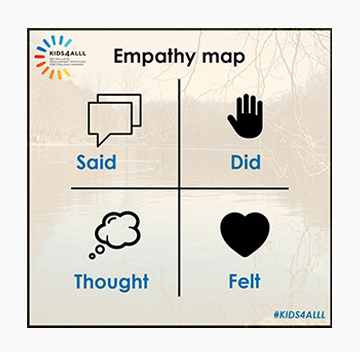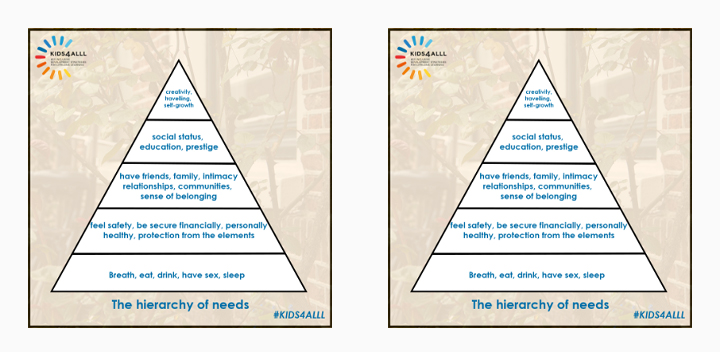
The first phase of KIDS4ALLL was dedicated to mapping research and pilot projects on local, national and EU level that focus on peer-to-peer and mentoring schemes for (migrant) children in order to provide a cross-national comparative analysis of collaboration schemes in education and in particular on best practices regarding LLL competences. The single national best practice reports have been submitted by all partners by the end of July.
This was followed by a qualitative data collection in institutions selected from this pool of best practices to identify key factors for maximizing educational outcomes in a benchmarking analysis, that will be completed and delivered by the end of September. The qualitative data collection was based on interviews carried by the project partners and included the development of empathy maps.
An empathy map allows us to sum up our learning from engagements with people. It provides four major areas on which to focus our attention on, namely what a user Said, Did, Thought and Felt. In this way it provides an overview of a person’s experience and is a great tool for the construction of personas. It’s fairly easy to determine what the user said and did. However, determining what they thought and felt should be based on careful observations and analysis of how they behaved and responded to certain activities, suggestions, conversations, etc. and which needs the interviewee is primarily focused on fulfilling.

In this regard, the exercise drew on Maslow’s pyramid - The hierarchy of needs. In 1943, Maslow published his paper “A Theory of Human Motivation” in which he proposed that human needs form a hierarchy that can be visualised in the shape of a pyramid with the largest, most fundamental physiological levels of needs at the bottom, and the need for self-actualization at the top.

Building on the qualitative data gathered through the interviews in selected institutions and analysed with empathy maps, the project consortium is currently finalising a user profile report. The elaborated profile of future target users and beneficiaries of the newly created learning environment should include their real needs and wants.
